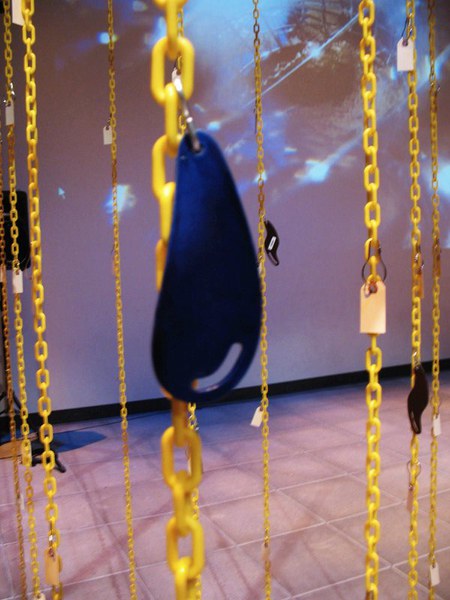A chance to explore this fascinating installation by CIRMMT member Rosemary Mountain dealing with sound, image, perception, terminology; also to learn about—and contribute to—the ambitious plans for the next phase. Rosemary is currently looking for collaborators, partners, hosts, end-users, media clip contributors, etc. as well as suggestions and feedback.
The installation will be setup in room A818 from March 14 to 24, 2025. Please see the registration form below to reserve a time slot.
An old (but still valid) PDF documentation summarizing key points of the project can be downloaded here. Visitors to the 8 floor CIRMMT desk can consult a print-out of the same.
Description
The Interactive Multimedia Playroom is an installation designed to stimulate discourse about sound and its interactions with image & movement, especially within artistic and analytical contexts. It helps identify factors that contribute to our perception of similarities, correspondences, and associations in the sonic and visual realms, and to examine the degree to which such perceptions may be shared among large or small groups of people. Despite the prevalence of multimedia content, there remains a paucity of critical language and analytical methods for investigating results of interacting sounds and images. Those working within artistic collaborations are often frustrated by the lack of common vocabulary for describing essential qualities of an existing or imagined sound. By isolating short fragments of sounds and video, and by associating the usually ephemeral sounds with hand-holdable objects, this platform enables easy comparisons and varied configurations, while the playful atmosphere of the installation and its ability to be fully customized encourages reflection and discussion.
Our aims are to enhance the physical and technological aspects of the Playroom, including a virtual version; to develop more high-quality content; and to expand into a network of full resource centres and diverse end-users.
How to play
It’s easy - you scan a barcode and hear a short sound or see a short video or still image. Keep going till you find an example you like, or a sound/image pair. Then place it in a ‘sorting’ system - a 3-D grid, sorting racks, etc. while explaining to others why you think it belongs there. Listen to other participants as they do the same. (Sign up with up to 6 friends / colleagues / students if you wish to play with people you know.) Simple, fascinating - and challenging!
How long does it take? 5-10 minutes to grasp how the system works; 5-10 minutes to learn about future plans (& your potential for contributing); 15+ minutes to play. Want your own system? Talk to us!
Registration
Due to space and time limitations, please register by filling this excel form. An email will be sent to confirm your visit.
*Note: if you do not want to publicly share your email on the excel form, please email Rosemary with your contact details at armchair.researcher[AT]gmail[DOT]com.
Biography
CIRMMT regular member Rosemary Mountain, PhD (music/interdisciplinary) has an eclectic range of interests within music, art/music, perception of time & rhythm, etc. with a formal background in composition (acoustic & electroacoustic) and analysis.
The IMP was conceptualized by Rosemary Mountain around 2002, and her partner Harry Mountain (sculptor/researcher) imagined the physical means to realize it; various students and colleagues helped develop it into a workable model which was shown in numerous different contexts in Montreal and internationally (see booklet for details 2002 - 2012). Triggered both by the image of Grey’s timbral similarity graph and the banal but potentially intriguing ‘musical’ greeting cards, the project was a solution to various problems emerging from the PI’s interest in music analysis, particularly the lack of adequate descriptors for musical ‘textures’ and ‘gestures’ and music in multimedia contexts.

